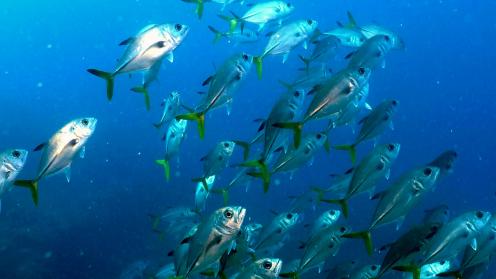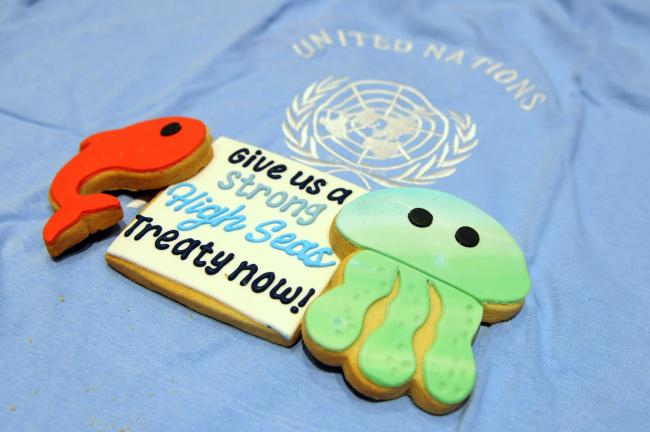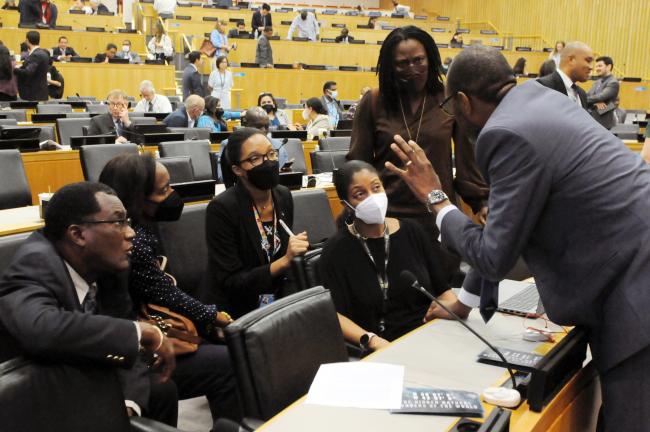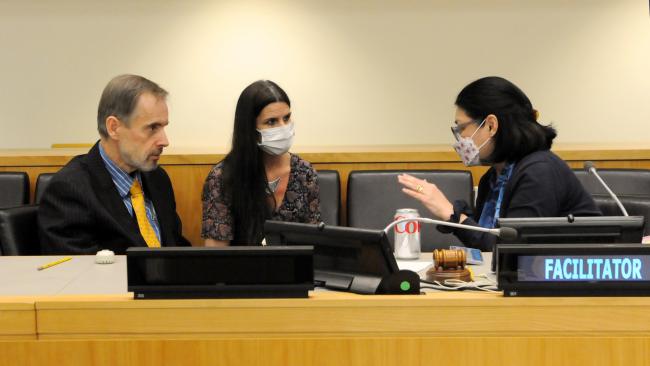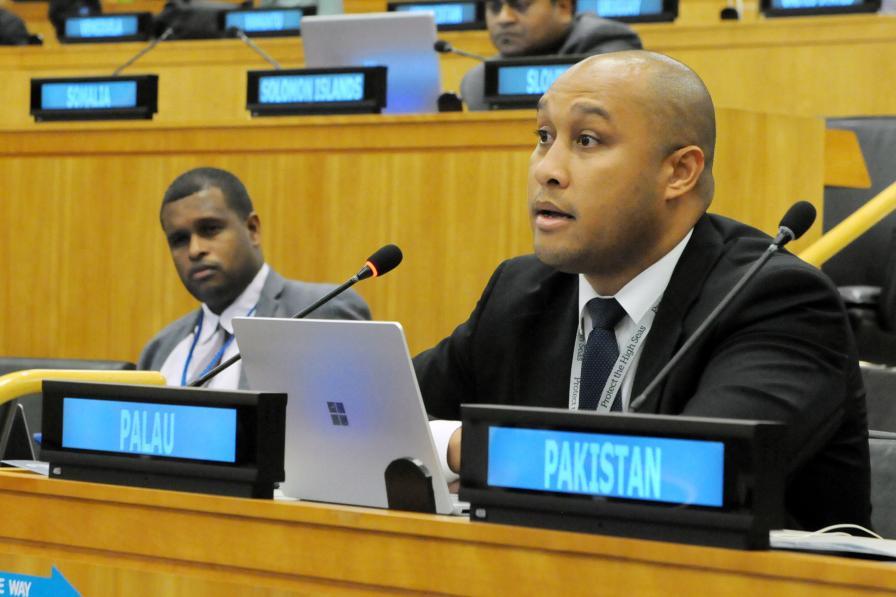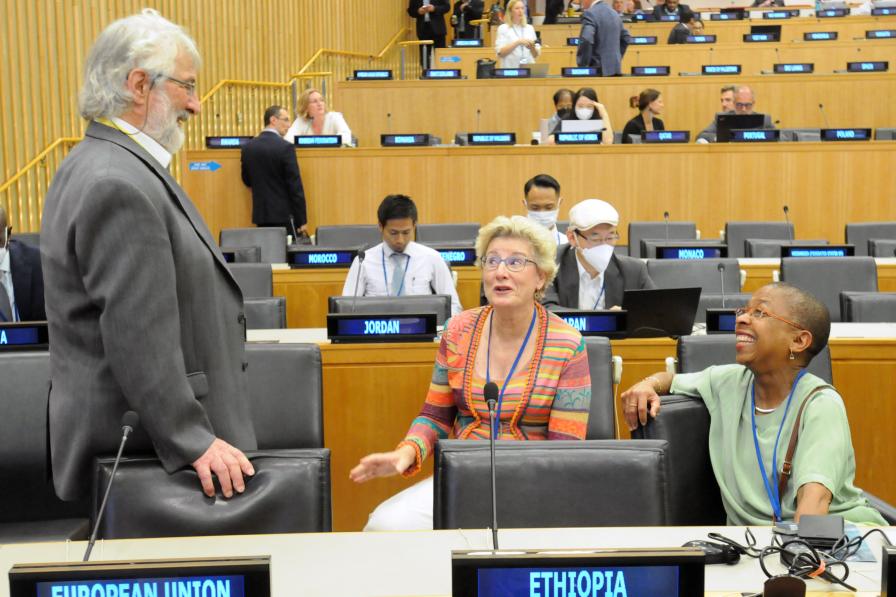Thursday, 25 August 2022, marked the penultimate day of negotiations at the fifth session of the intergovernmental conference (IGC-5) on the conservation and sustainable use of marine biological diversity of areas beyond national jurisdiction (BBNJ). In addition to participating in closed-door “President’s consultations,” delegates met in informal informals and small-group discussions throughout the day and into the evening, addressing provisions on:
- marine genetic resources (MGRs), including benefit-sharing questions;
- measures such as area-based management tools (ABMTs), including marine protected areas (MPAs);
- environmental impact assessments (EIAs); and
- capacity building and the transfer of marine technology (CB&TT).
Want to dive deeper? Read the full Earth Negotiations Bulletin daily report.
In their discussions on MGRs, they heard reports from small groups, including on provisions related to the objectives and benefit-sharing. Some progress was noted on monetary benefit-sharing, one of the significant challenges towards reaching an agreement. A proposal for dedicated funding through a percentage increase in parties’ assessed contributions was discussed in a small group. However, according to many participants, a considerable amount of work remains, including on issues of commercialization of products containing MGRs from ABNJ, which is not included in the discussed proposal.
Considering ABMTs, including MPAs, delegates finalized their reading of that part of the refreshed draft agreement. They considered provisions related to implementation, and monitoring and review, before revisiting previously discussed issues such as the definitions. They also discussed and agreed to a reference to a CB&TT mechanism.
On EIAs, they struggled to reach consensus on several technical details of the text, specifically on provisions related to how EIAs under the new BBNJ agreement will relate to EIAs under other instruments and bodies.
For CB&TT, they conducted a brisk reading of the entire part of the refreshed text. Several small groups reported on their work, including on provisions related to cooperation on, and modalities for, CB&TT, and modalities for the transfer of marine technology.
With one day left, some delegates were buoyed by the prospect of agreement on key areas that could unlock universal agreement towards a new high seas treaty. Others, acknowledging the enormous work ahead to build bridges, sought to ensure that the text is strong enough for any eventuality. Although much still seems to be in the balance, some remained optimistic that “unlocking the text on MGRs” could be the “lynchpin that gives us an agreement.” Small group discussions carried on into the night to try and reach consensus on this and other issues.
All ENB photos are free to use with attribution. For photos from IGC-5 of BBNJ, please use the following attribution: Photo by IISD/ENB | Diego Noguera.
To receive free coverage of global environmental events delivered to your inbox, subscribe to the ENB Update newsletter.
Around the Venue

Vladimir Ryabinin, UN Educational, Scientific and Cultural Organization (UNESCO), and Fredrik Haag, International Maritime Organization (IMO)

L-R: Clément Chazot, International Union for Conservation of Nature (IUCN); Bleuenn Guilloux, University of Brest; and Klaudija Cremers, Institute for Sustainable Development and International Relations (IDDRI)

L-R: Heath Synnott, Australia; Stoimenova Yordanka, Canada; and René Lefeber, the Netherlands, Facilitator for the informal group on EIAs
